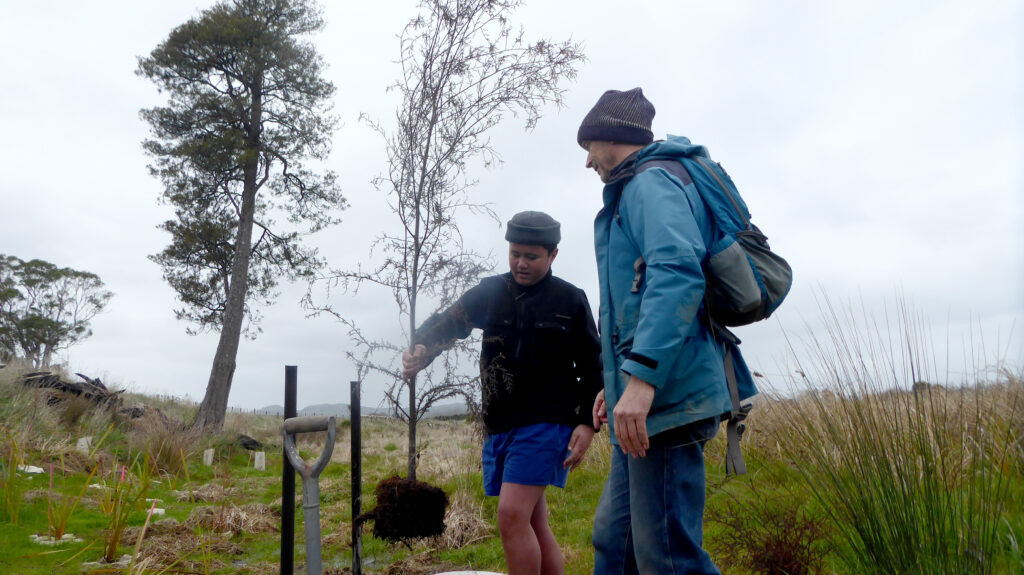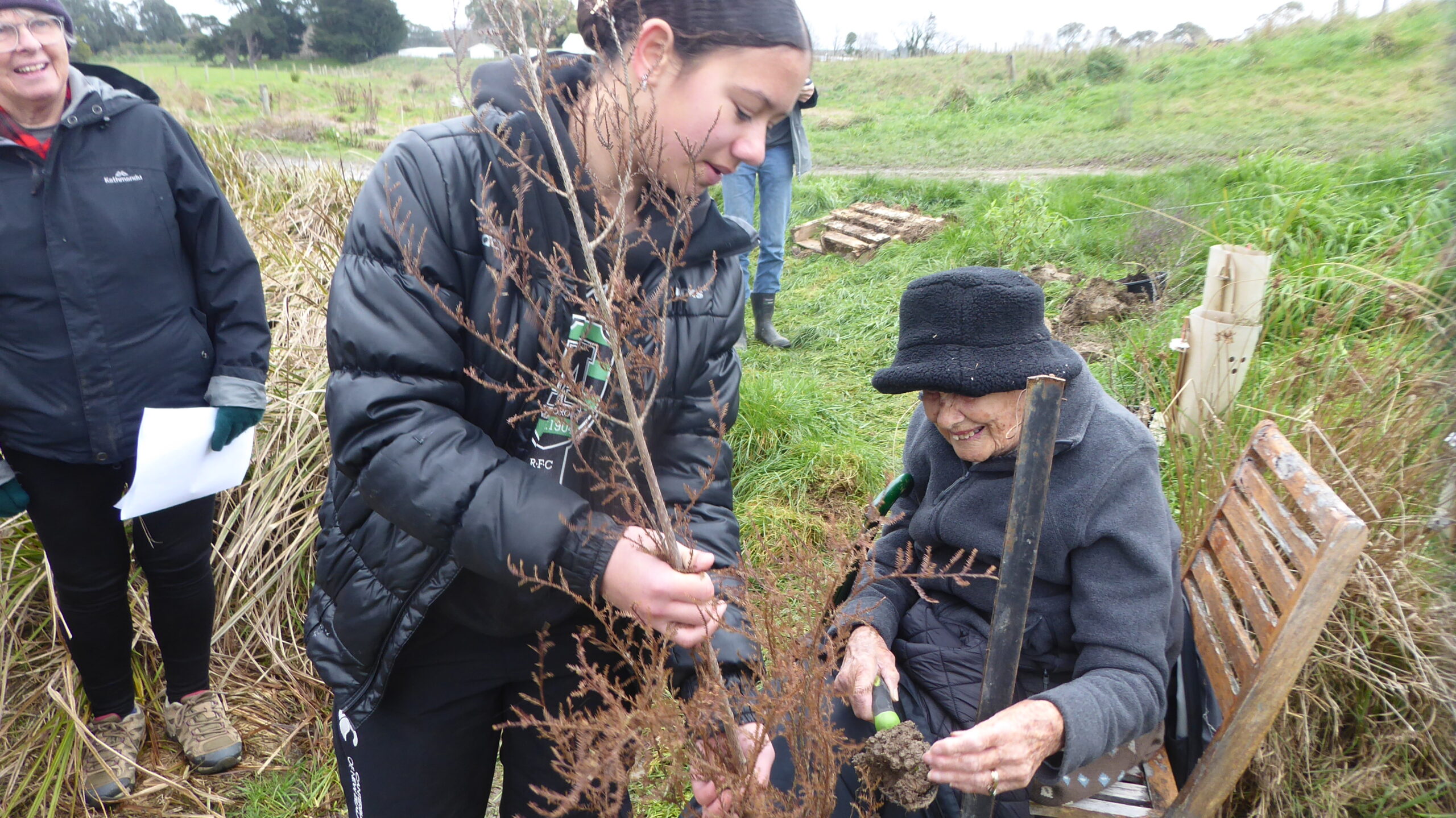The morning was cold, the wind chill, water flowed under foot in places as hardy volunteers gathered for a native tree, shrub and grass planting session on part of Ruamahanga Farm’s wetland area.
The real focus of the morning was some kahikatea saplings gifted by Martinborough’s Hau Ariki marae and, separately, a nearly two-meter-tall kahikatea sapling gifted by a local church to the farm’s 100-year-old matriarch Yvonne Riddiford and the wetland restoration project.
The morning’s planting began with a karakia led by Martinborough’s Hau Ariki marae kaumatua Wiremu Dawson. “Sing with passion and power – it’s all right, we’re out here (in the wetland),” he said, calling for rousing “A Cappella” renditions. Karakia and waiata rang around the planting site.
Jane Riddiford thanked Hau Ariki for its gift of the saplings and the 30-plus helpers for putting 200-odd swamp grasses, shrubs and saplings – including 40-plus kahikatea – into the ground.
She noted when she was growing up on the farm, the wetland was “filled with crack willow.”
A chance find of three kahikatea trees (‘The Three Sisters’) amid the willow tangle a decade ago had slowly ignited the idea of replanting with natives, and “what it would look like.”
This had been reinforced by visiting “the remnant of native bush … in a QE11 podocarp forest full of huge mātai and kahikatea” on nearby Waihinga Farm, she told the group.
Regular planting projects by tamariki from Martinborough and Kahutara schools have seen thousands of native trees, shrubs and grasses already embedded in the wetland and nearby Ruamahanga Riverbank, and most thriving in the conditions.
For Riddiford, it was a big step forward to plant the kahikatea saplings back into the wetland area.
“When my sisters, Liz and Lucy and my husband Rod and I first envisaged restoring the wetland …
it was the three remaining kahikatea that caught
our attention.
“They were barely recognisable, weather beaten and defoliated with few branches, having been on drained ground and surrounded by crack willow for the last 50 years or more.”
The back-breaking work of clearing the crack willow had been done and the kahikatea stood on their own, rising out of the pasture grass.
She noted that “they looked sad and yet somehow hopeful. They appeared to us as sentinels for what the land once was and what it might again be. We named them ‘The Three Sisters.’

Project by the numbers:
- about 15 hectares of the farm is to be restored by planting;
- about 7 hectares already planted, with more infill planting to come;
- about 10,000 trees and wetland grasses have so far gone in the ground;
- about 70 percent of the planting has succeeded – and is improving as the group has “honed down” its species list to what really suits the conditions and gets on top of pasture grass regrowth and predator control.
- apart from the first year, all the trees and wetland plants have been funded by Trees that Count and Greater Wellington Regional Council;
- supported by Martinborough Lions, Green Jersey Cycles and more than 50 people volunteering on the first Sunday of the month during planting season.
A grant from the Pain Fund will cover a series of stiles and signage for a walkway through the wetland and along the river – opening in November with the Wairarapa walking festival.



